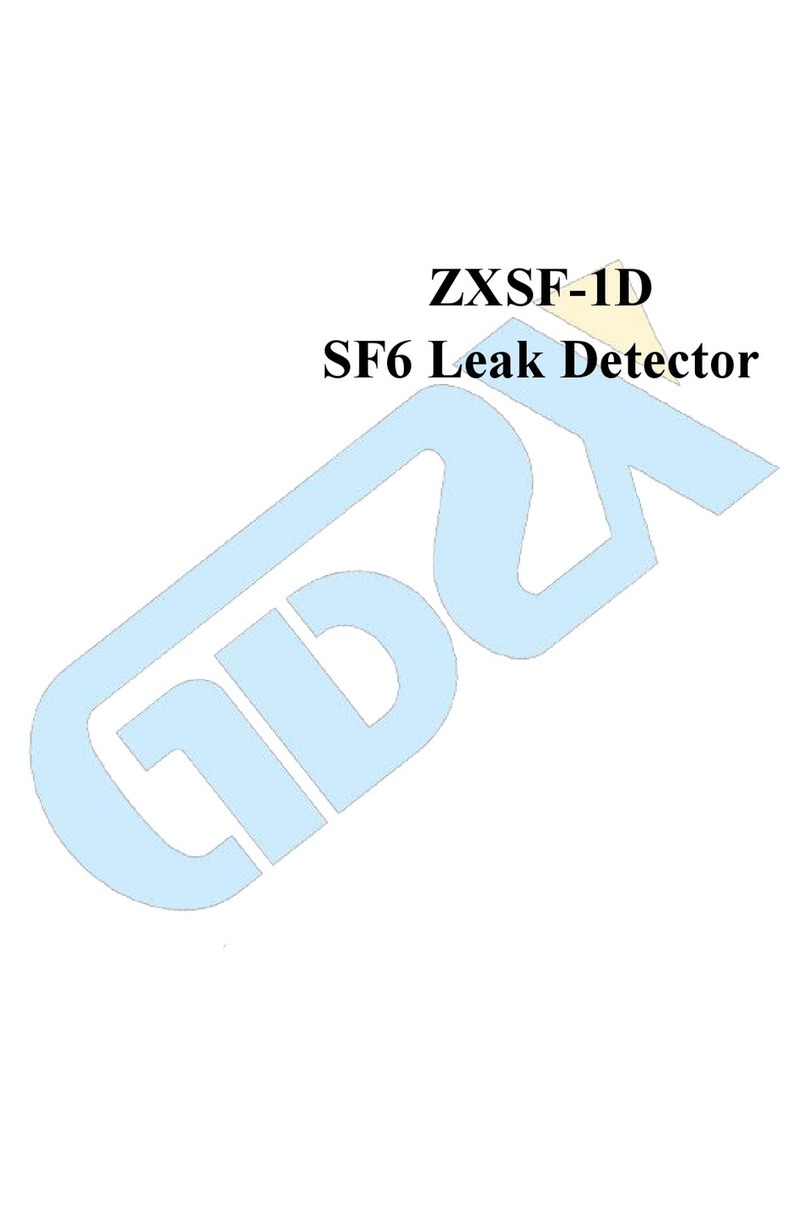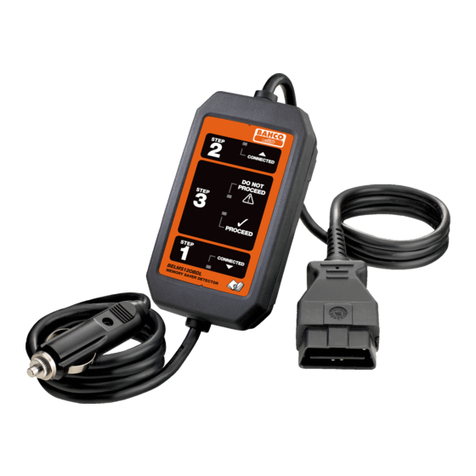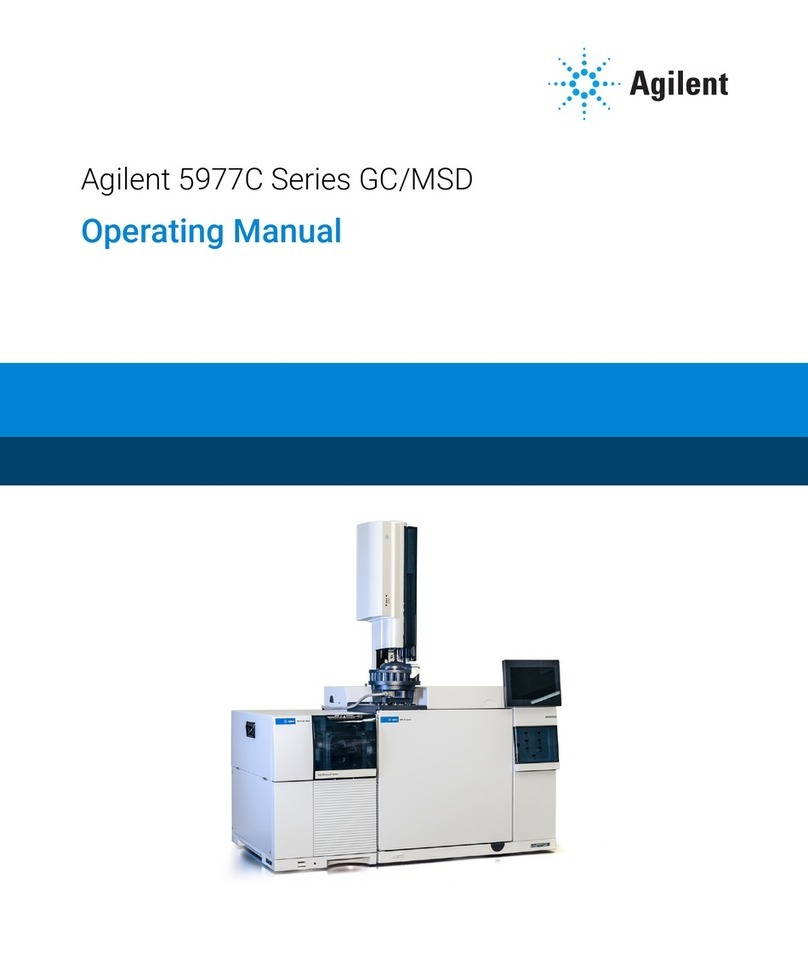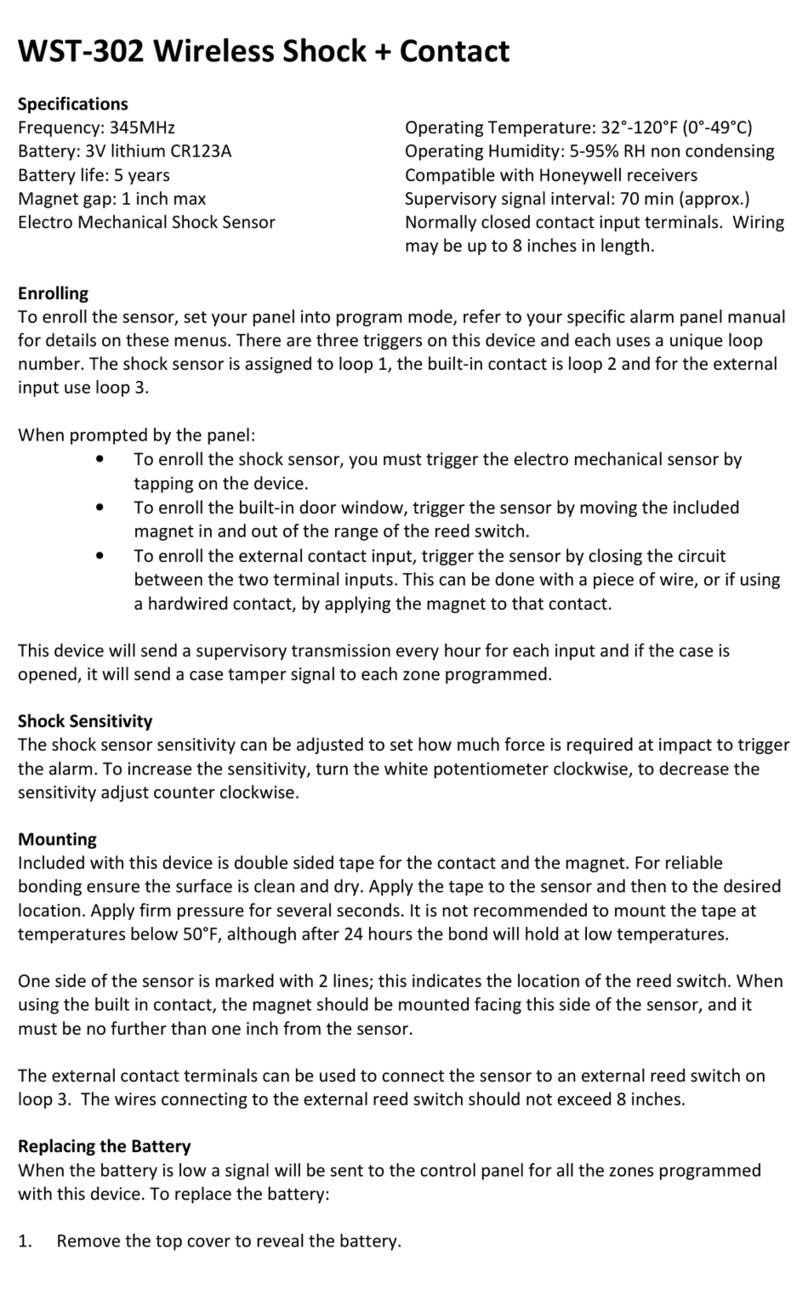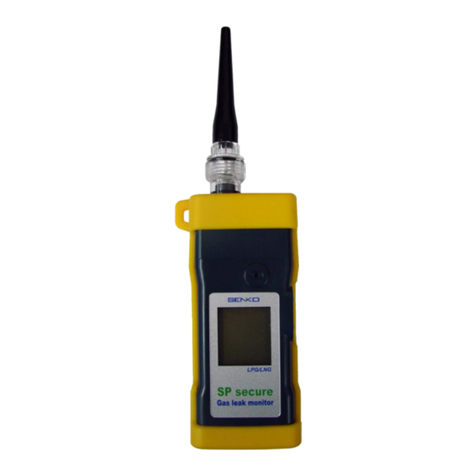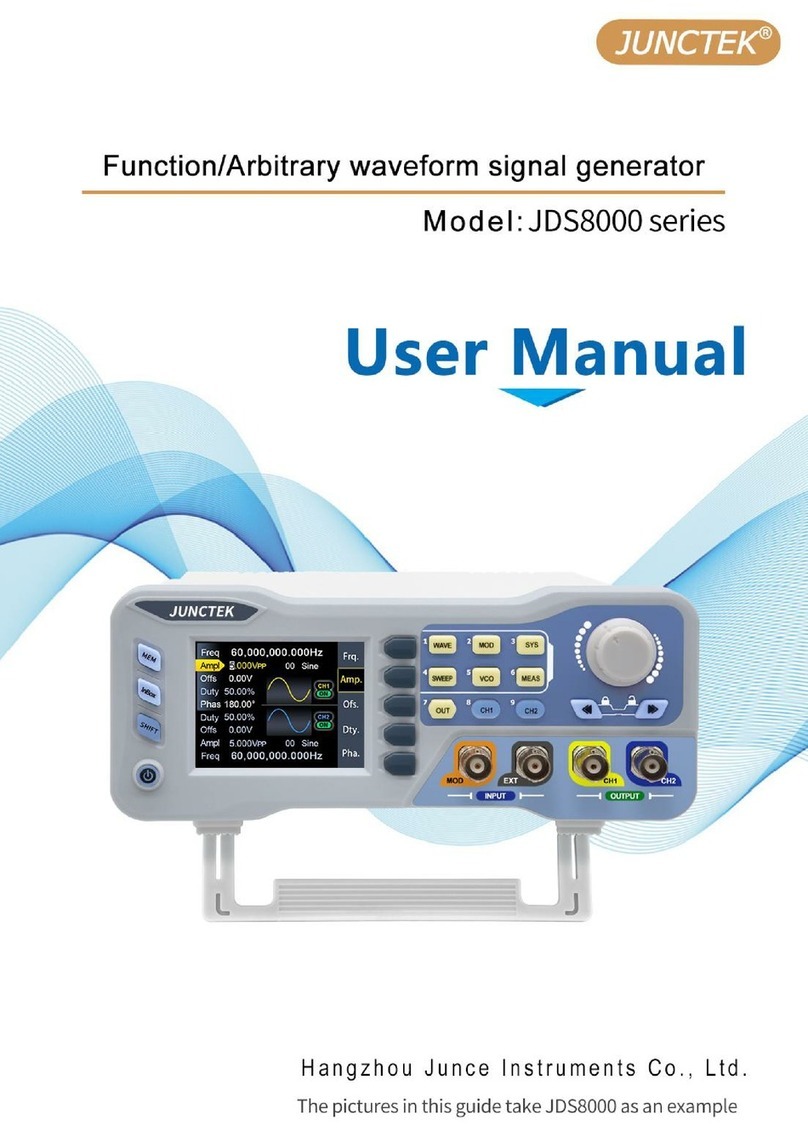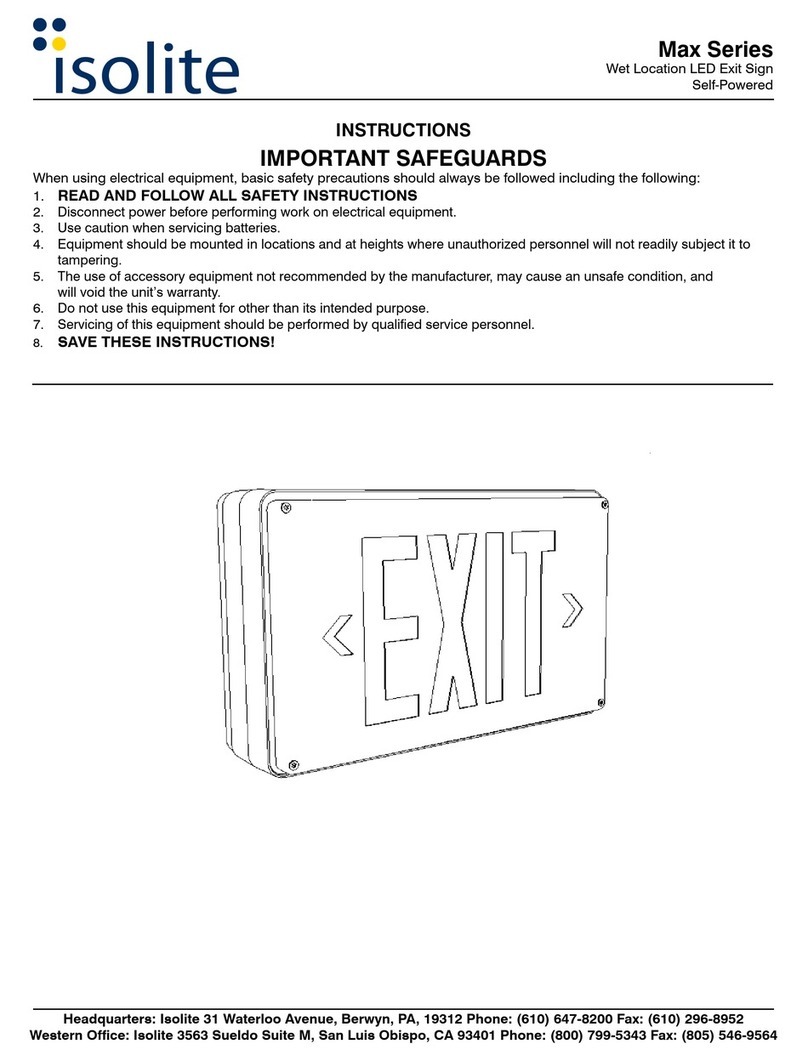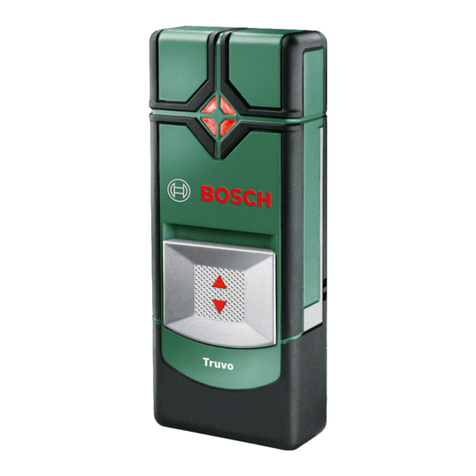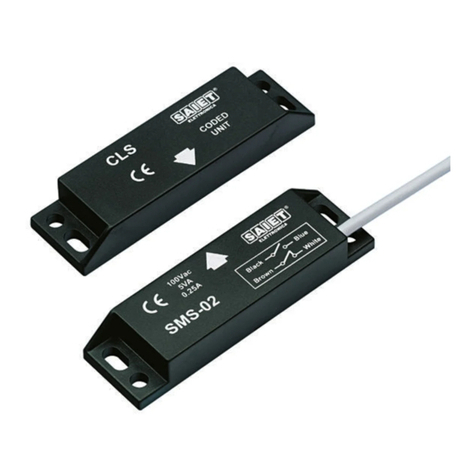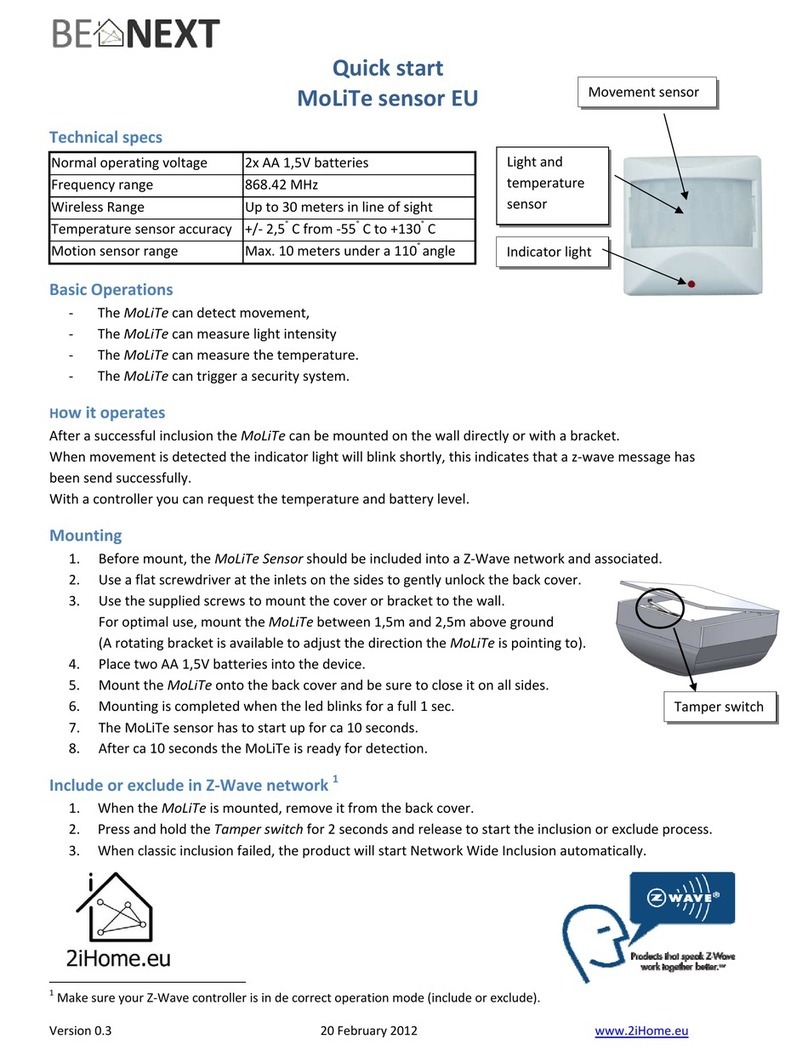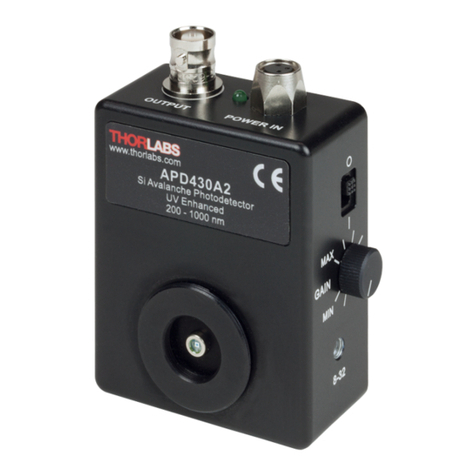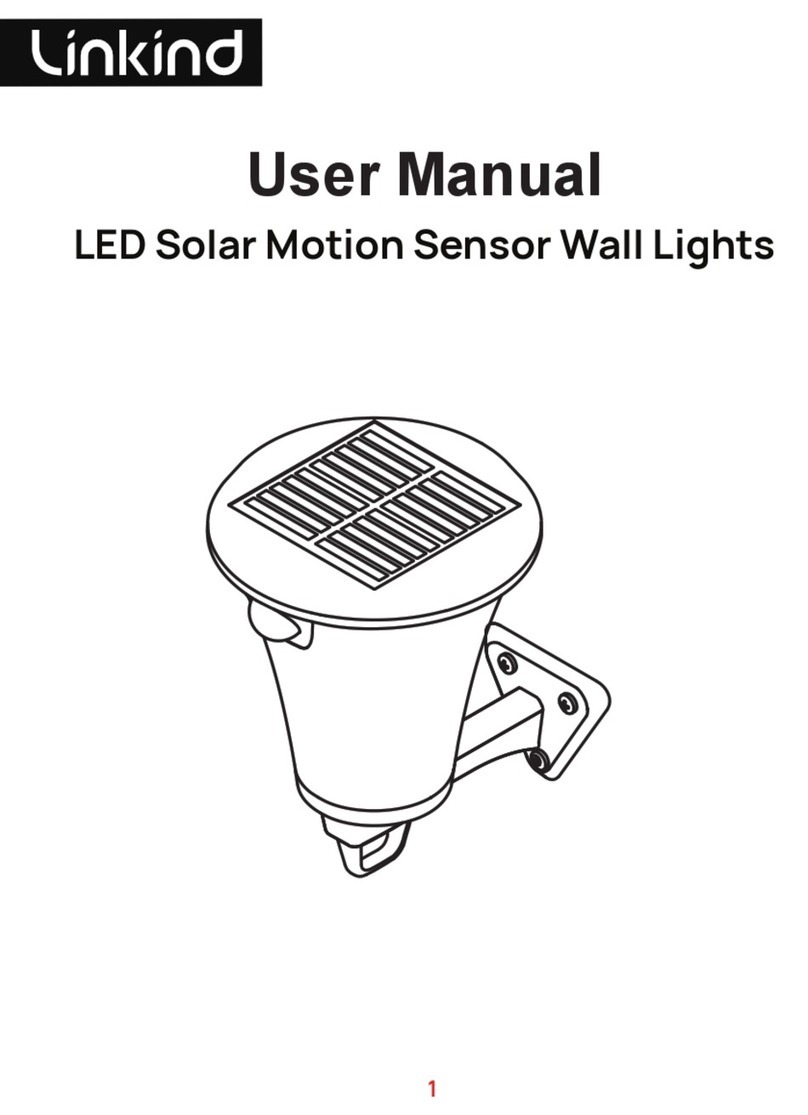GDZX ZXPD-200L User manual

1
ZXPD-200L
Partial Discharge Detector
Use Manual

2
I. Overview
1.1 About this manual
This manual provides how to use the ZXPD-200L partial discharge
detector in a safe way. Before you use this product for the first time, please read
the instruction manual carefully, which will help you to use this product skillfully.
The instruction manual details the operation methods of the safety regulations
and the flow of using various measurement modes.
1.2 Liability statement
The company guarantees that each product has no quality problems in the host
and accessories when it leaves the factory, and that there is no defect in the
function of the host. The warranty period of the ZXPD-200L partial discharge
detector is one year, and the warranty period starts from the date of shipment.
Provide free repair services for products within the warranty period, and
guarantee that the repair period does not exceed 90 days. If the user damages
the product due to misuse, disassembly, negligence, accident, or abnormal
operation during use, the company will not provide any free maintenance
service.
When maintenance service is required, please contact the service center of our
company nearby. The service center will choose whether to provide door-to-door
pickup service according to your area. When the door-to-door pickup is not
available, the service center will negotiate with you whether to send the product

3
to the service center by mail. After the repair is completed, the service center will
contact you to negotiate the appropriate way to return the product. If the
company determines that the failure is due to misuse, disassembly, accident,
abnormal operation, or the product has passed the warranty period, the
company will estimate the repair cost and start repairs only after obtaining user
authorization. For users who pay for repairs, they will receive invoices for repairs
and return shipping costs at the same time they receive the repaired products.
This statement contains all the maintenance contents provided by our company,
and our company does not provide maintenance services expressed or implied
in other ways. At the same time, the company will not be responsible for any
special, indirect, accidental damage and data loss, regardless of whether it will
cause economic and civil losses to users. The right to use this manual is limited
to users of this company. Without any written permission of the company, it is
strictly prohibited to copy, transmit, distribute and store any content in this
document in any form.
2. Product Introduction
2.1 Notes
The ZXPD-200L partial discharge detector is used for the detection and
evaluation of the insulation status of high-voltage switchgear, ring network
cabinets, transformers, GIS, overhead lines, cable terminals, cable branch

4
boxes and other equipment. There are the following precautions when using this
device:
☀Please use indoors with a temperature of -20 ℃ ~ 50 ℃and a relative
humidity not exceeding 80%;
☀Please stay away from flammable and explosive dangerous goods;
☀Please charge the instrument when it is powered on for the first time, and only
turn on when the charging indicator is on;
☀To prevent interference or leakage, please turn off the power switch when
charging;
☀If the liquid and corrosive substances come into contact with the instrument, it
should be immediately stopped and shut down, and handled by a professional;
☀All connectors are imported connectors, and they should be plugged in and
out. Do not rotate, shake the connector, or pull the cable forcefully. The plug
connector is moderately strong and should be inserted into place when plugged
☀All mainframes and accessories must not be disassembled. If it is really
necessary, it needs to be disassembled by our after-sales service personnel.
2.2 Brief description
The ZXPD-200L partial discharge detector can be widely used in the theater
detection of power systems, including the insulation status of high-voltage
switchgears, ring network cabinets, voltage / current transformers, transformers
(including dry-type transformers), GIS, overhead lines, and cables Detection, to

5
measure the discharge level of electrical equipment through the following
indicators:
Partial discharge intensity detection: By measuring the discharge signal within a
power frequency period, the intensity of partial discharge is characterized
according to the maximum value (dB) in the discharge pulse sequence.
Partial discharge frequency detection: The device measures the discharge
signal within a power frequency period, extracts discharge pulses and
characterizes the frequency of partial discharges according to the number of
discharge pulses.
2.3 Product features
☀Configure different sensors to realize partial discharge detection of almost all
electrical equipment;
☀Provide time domain waveform, PRPD, PRPS and other discharge patterns to
realize the analysis of different discharge types;
☀Humanized man-machine interface facilitates data management of different
devices, including traceback of historical data change trends, horizontal and
vertical data analysis, and realizes 360 ° comprehensive diagnosis of the device
under test;
☀Built-in ultrasonic sensors and transient ground voltage (hereinafter referred
to as TEV) sensors, which can be connected with special sensors such as
transformers, GIS, overhead lines and cables;

6
☀Adopt non-intrusive detection method, no power failure during the test, maybe
no high voltage source is applied, which is more convenient to use than
traditional pulsed partial discharge detector;
☀The test bandwidth range is 30kHz ~ 2.0GHz, suitable for the detection
principle of various frequency bands;
2.4 Product Application
ZXPD-200L partial discharge detector is widely used in the following fields:
☀Development and distribution enterprises
☀Railway system
☀Petrochemical power supply system
☀Aerospace testing field
☀Automatic testing field
2.5 Parameters
TEV measurement
UHF measurement
Measuring range
0-60 dBmV
detection frequency
300-1500MHz
Resolution
1dB
measurement range
-75dBm-0dBm
Accuracy
±1dB
accuracy
<1dBmV
Maximum pulse per
cycle
1400
Sensor band
300-2000MHz
Measurement
frequency band
1~100MHz
AA measurement
AE measurement
Measuring range
-6dBμV - 68dBμV
Measuring range
-6dBμV - 68dBμV
Resolution
1dB
Resolution
1dB
Accuracy
±1dB
Accuracy
±1dB
Sensor center
frequency
40 kHz
Frequency range
40~200 kHz
HFCT measurement
Sensor
transmission
impedance
5mV/mA
Detection frequency
1~30MHz
Sensitivity
≤50pC
hardware

7
Shell
ABS
Display
4.0 inch RGB LCD screen
Controller
ARM
Connector
USB interface (also charger input)
3.5mm stereo headphone jack
External ultrasonic sensor input
wireless wifi
Wireless synchronization benchmark
Earphone
minimum 8 ohm
SD card
standard 16G
Built-in battery
3.7V/1Ah lithium battery
Working time
about 8 hours
Charger
AC 90-264V or DC 5V
Operating temperature
-20 ~ 50℃
Humidity
20-85% relative humidity
Weight
0.4KG(host)
2.6 Standard
DL / T 500-2009 Technical conditions for voltage tester
GB / T 4208-2008 Classification of enclosure protection level (IP code)
GB / T 2423.1-2001 Basic environmental test regulations for electrical and
electronic products Test A: Low temperature test method
GB / T 2423.2-2001 Basic environmental test regulations for electrical and
electronic products Test B: High temperature test method
GB / T 2423.4-1993 Basic environmental test regulations for electrical and
electronic products Test: alternating damp heat test method
GB / T 2423.5-1995 Environmental testing for electrical and electronic products
Part 2: Test methods Tests and guidelines: Impact test methods
GB / T 2423.10-1995 Environmental testing for electrical and electronic products
Part 2: Test methods Tests and guidelines: Vibration (sine) test method
GB / T 17626.2-2006 Electromagnetic compatibility test and measurement
technology Electrostatic discharge immunity test (IEC 61000-4-2: 1995)

8
GB / T 17626.5-2008 Electromagnetic compatibility Test and measurement
technology Surge (shock) immunity test (IEC 61000-4-5: 1995)
GB / T 17626.3-2006 Electromagnetic Compatibility Test and Measurement
Technology Radio Frequency Electromagnetic Field Radiation Immunity Test
(IEC 61000-4-3: 1995)
GB / T 17626.4-2008 Electromagnetic Compatibility Test and Measurement
Technology Fast Transient Electrical Pulse Group Immunity Test (IEC 61000-4-4:
1995)
GB / T 17626.7-1998 Electromagnetic compatibility Test and measurement
technology Power supply system and connected equipment Harmonic and
interharmonic wave measurement and measurement instrument guide
GB / T 19862-2005 Industrial automation instrument insulation resistance,
insulation strength technical requirements and test methods
2.7 Product configuration list
The ZXPD-200L partial discharge detector is composed of the detection host,
sensor, PC, software CD and related accessories. Among them, the sensor, PC
and software CD are optional parts.Shown as Table 1
Name
Model
Quantity
Unit
Remarks
1
Detection host
ZXPD-200L
1
set
standard
2
External contact ultrasonic sensor
GAE-40
1
pcs
optional for partial discharge
detection of transformers,
GIS, motors, etc
3
UHF sensor
GUHF-2
1
pcs
option for GIS partial
discharge detection
4
High frequency transformer
GCT-3
1
pcs
1 option for cable partial
discharge detection
5
test leads
-
1
set
standard

9
6
charger
-
1
pcs
standard
7
USB cable
-
1
pcs
charging and PC data
communication
8
Use manual
-
1
copy
9
Factory inspection report
-
1
copy
10
Certificate
-
1
copy
11
Warranty card
-
1
copy
Table 1
This manual demonstrates that the device language is Chinese, and it can
be completely set to English when overseas customers purchase
3. Operating Instructions
3.1 Structure
ZXPD-200L Host
The front end of the ZXPD-200L host has a built-in non-contact ultrasonic sensor
and a built-in TEV sensor, which can realize the detection of partial discharge of

10
high and low voltage switch cabinets without external sensors. For the detection
of partial discharge of equipment such as cable terminals and cable branch
boxes, it is only necessary to connect the corresponding special sensor through
the sensor expansion port at the bottom of the host. The host can automatically
switch the measurement mode according to the different sensors. For sensors
that can be connected to ZXPD-200L, please refer to the optional part in Table 1
of the product configuration list.
3.2 System power on and off and status display
Power button
ZXPD-200L realizes the switch on and off by touch switch, only need to touch on
the power label, the status indicator will show the current working status of the
host after power on, if the power adapter is connected, and the indicator C Lights
up until the battery is fully charged.
The indicator S is used to show the status of data sampling or online status. In
normal measurement mode, the S status indicator flashes red, and when the
host is online (connected with PC) and the PC is successfully connected, the S
status indicator flashes green .
Indicator light
3.3 Test
3.3.1 Test with built-in sensor
There are two principles for the partial discharge detection of the switchgear: the

11
ultrasonic principle and the transient ground pressure (TEV) principle, and the
ultrasonic sensor and TEV sensor built in the ZXPD-200L are used to measure
the partial discharge of the high voltage switchgear The position of the front end,
the part needs to be close to (ultrasonic measurement) or close to (TEV
measurement) high-voltage switchgear during the test. Note that close to and
close to are different, depending on which principle is used to test the
switchgear.
Host built-in sensor
Ultrasonic measurement
If you choose the built-in ultrasonic sensor to measure the partial discharge of
the switchgear, you do not need to do other operations or settings after turning
on, because the ZXPD-200L selects the built-in ultrasonic sensor by default after
booting, and the upper left of the screen will show which sensor is currently
connected. As shown in the figure below, this state is the ultrasonic
measurement mode
Sensor status information
In the ultrasonic measurement mode, the measured data is dBuV, because
dBuV is a logarithmic function value based on 1uV. Therefore, the measured

12
data in the ultrasonic mode can be positive or negative. According to the
processing capacity of the ultrasonic amplifier of ZXPD-200L, -6dBuV To the test
range of 68dBuV, the larger the negative value, the smaller the ultrasonic signal
and the closer to 0uV, not a negative number! The measured data in an
interference-free environment is usually between -6dBuV and 0dBuV.
In addition to testing the amplitude of the discharge signal, ZXPD-200L can also
detect the number of discharge pulses per cycle, expressed as P / Cycle, the
size and amplitude of the pulse number comprehensively reflect the insulation
status of the switchgear, and the general pulse number is a high amplitude
below 50 The data is a typical discharge phenomenon.
In many cases, the environment of the cabinet under test will be filled with
various complex ultrasonic interferences, such as flashing fluorescent lamps,
ultrasonic mouse repellers, fans in operation, etc. Therefore, it is necessary to
measure the environmental value before testing the cabinet to judge The
interference level of the environment, when the ultrasonic environment value is
too large (for example, more than about 10dBuV), all sources of interference
need to be excluded, otherwise the excessive interference signal will mask the
real signal and affect the reading. It is recommended that when the ultrasonic
interference is large and cannot be effectively eliminated Use TEV method to
measure cabinet value.
Ultrasonic signals use air as a propagation medium and will come out from the
gap of the cabinet. Therefore, when measuring the value of the switch cabinet

13
with ultrasonic waves, the sensor needs to be close to the gap of the cabinet.
Ultrasonic signals are audible through digital filtering).
According to the regulations of the State Grid Regulations, refer to Table 2 to
determine the insulation status of the switchgear:
Ultrasound reading
Explanation
-6 ~ 0dBuV,No discharge sound
No partial discharge
0 ~ 6dBuV,a short discharge sound
There is a slight discharge of the equipment, you should
pay attention to it later
Above 6dBuV,discharge sound
The equipment has obvious discharge, which should be
combined with TEV test
Table 2
Note: the demarcation point (6dBuV) is slightly different in different regions. In
some regions (such as foreign countries and southern networks), 6dBuV is used
as the demarcation point. Above 6dBuV is judged as an obvious discharge
phenomenon, while users of State Grid generally use 8dBuV as the demarcation
point. Whether the final purpose of 6dBuV or 8dBuV is to predict the insulation
status of the switchgear, it is recommended to use 6dBuV as the demarcation
point, so that the operation status of the switchgear can be more early warning.
TEV measurement
If you need to use the built-in TEV sensor to measure the partial discharge of the
switchgear, just click the icon in the sensor type display area to switch to the TEV
sensor mode

14
Built-in sensor to switch active area
Switch from built-in sensor to built-in TEV sensor
Note : clicking this area is only valid for the built-in sensor switching. This
function is invalid when external sensors are connected. The system will
automatically switch and display the sensor icon according to the connected
sensor type, without manual selection.
The TEV probe at the front of the host is a capacitive sensor, and the
high-frequency partial discharge signal will propagate on the surface of the metal
cabinet. The frequency is generally between 3 and 100MHz. Front) and close to
the metal cabinet.
Like the ultrasonic measurement method, the environmental value needs to be
measured before the cabinet value is measured. You can measure the
environmental value at the metal plate, metal door frame, etc., and then close
the TEV sensor on the front of the host to the cabinet body to measure the
cabinet value. The difference between the body value and the environmental
value is used to judge the operation status of the switchgear.

15
The TEV measurement mode also needs to refer to the pulse count value P /
Cycle, and the pulse number and amplitude comprehensively measure the
health of the switchgear.
When the environmental value is large, the source of interference needs to be
found. The interference source of TEV is different from ultrasonic waves.
Ultrasonic interference is generally limited to a limited space, while TEV
interference affects the entire space through radio frequency, such as welding
machines, inverters, walkie-talkies, Compared with ultrasonic interference,
wireless broadcasting stations, etc., such interference signals are sometimes
difficult to avoid or clear, so it is recommended to use the ultrasonic method to
measure when the environment (interference) value is detected to be large.
The TEV test data can be judged according to Table 3, there will be slight
discrepancies in different regions, but the difference is not much.
TEV reading
Explanation
High background reading, ie greater than 20dB
Note: The background reading refers to the reading when
the sensor is not attached to the cabinet.
(a) High levels of noise may mask the discharge in the
switchgear;
(b) It may be due to external influences, and the external
interference source should be eliminated as much as possible
before retesting, or use a partial discharge monitor to identify
any discharge in the switchgear.
All readings of switchgear and background reference are
less than 20dB.
No partial discharge. Recheck once a year.
The reading is 20 ~ 29dB
The device is slightly partially discharged
The reading is 29 ~ 40dB
The equipment has medium-level local discharge, which
should be reported to the team or special responsibility to
shorten the inspection cycle
The reading is 40 ~ 50dB
There is serious partial discharge of the equipment. It should
be reported to the team or special responsibility to shorten the
inspection cycle. When there is a motor stop, the source of the
partial discharge should be checked.
The reading is 50 ~ 60dB
There is serious partial discharge of the equipment, you should

16
report to the team or special responsibility, shorten the
inspection cycle, and cut off the power for maintenance as
soon as possible
The switchgear reading is 10dB higher than the background
level, and the reading is greater than 20dB absolute value,
which is 20dB higher than the background
It is likely that there is internal discharge activity in the
switchgear. It is recommended to use a partial discharge
locator or partial discharge monitor for further inspection
The above description is based on the operation specifications of the switchgear.
The insulation degree of the switchgear can be judged by readings. The
operation status of the switchgear can also be analyzed through the map.
According to the map, the insulation status of the device can be more
comprehensively understood, such as the partial discharge The phase analysis,
the number of discharge pulse groups, etc., the spectrum analysis method is
suitable for all high-voltage equipment, including switchgear. The following
describes the ZXPD-200L's spectrum function in detail.
3.3.3 Atlas mode
Time domain signal waveform and PRPD pattern
ZXPD-200L can provide time domain signal waveform, PRPD map and PRPS
map. ZXPD-200L displays the time domain signal waveform and PRPD phase
map by default after booting, as shown in the following figure:
The upper part of this interface is the time-domain signal waveform area, which

17
displays the collected signals in real time, and the lower part is the PRPD phase
map. With time, the PRPD map will continuously redraw the relationship
between the discharge signal and the phase. According to the relationship
between the phase and the discharge amplitude, it is analyzed whether the
discharge characteristics of the current device have the correlation between 50
Hz and 100 Hz, and the repeatability of the discharge signal in the phase
interval.
Time domain signal waveform PRPD map
PRPS map
The PRPS map is a three-dimensional map related to the discharge amplitude,
phase and time. It can fully reflect the one-to-one correspondence between the
three, and it can more vividly reflect the characteristics of the current device
discharge. Combining the PRPD map can be more convenient. Analyze the
current discharge type.
Under the default test interface, pressing the icon "" will restart the spectrum
data statistics, after the completion of the set number of cycles (can be set in the
setting interface) after data sampling, the PRPS spectrum is automatically
formed and the PRPD and PRPS spectrum display is automatically popped up
interface

18
.
PRPD and PRPS atlas
Taking GIS as an example first, a UHF UHF sensor needs to be configured in the
field test. The frequency range is 300 ~ 2000MHz. The sensor should be placed
in the position of the insulating basin. If you use a contact ultrasonic sensor to
test, you can test the whole tank.
UHF sensor GIS field partial discharge test
3.3.4 Typical discharge types and discharge patterns
Free metal particle discharge

19
Free metal particle discharge is a partial discharge between metal particles and
metal particles and a partial discharge between metal particles and metal parts.
This type of discharge amplitude distribution is relatively wide, the discharge
time interval is unstable, its polarity effect is not obvious, and there is a
discharge signal distribution throughout the phase of the power frequency cycle.
Suspended potential body discharge
The floating potential body discharge is a partial discharge generated by
loose metal parts. The amplitude of such discharge pulses is stable, and the
adjacent discharge time intervals are basically the same. When the suspended
metal body is asymmetric, the positive and negative half-wave detection signals

20
have different polarities.
Air gap discharge inside insulation
The air gap discharge inside the insulation is mainly due to internal cracking
and gas
Due to defects such as gaps, the number of such discharges is small, and
the cycle repeatability is low. The discharge amplitude is also more dispersed,
but the discharge phase is more stable and there is no obvious polarity effect.
Metal tip discharge
Metal tip discharge is a metal burr or tip at a high or low potential, SF6
Table of contents
Other GDZX Security Sensor manuals
Popular Security Sensor manuals by other brands

Hytronik
Hytronik HIR23 quick start guide
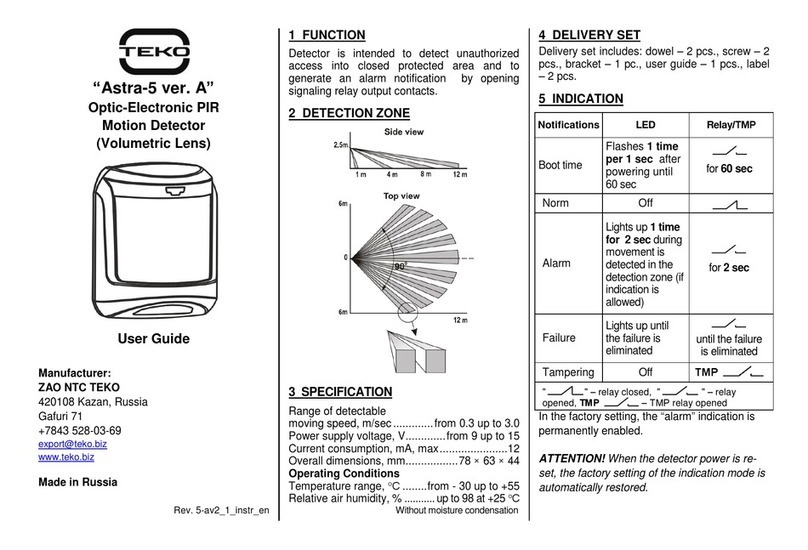
teko
teko Astra-5 ver.A user guide
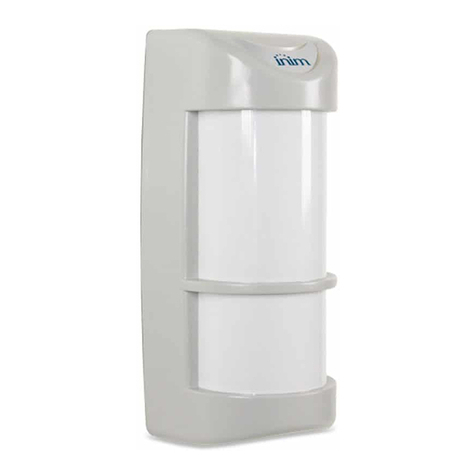
INIM Electronics
INIM Electronics ODI100H Installation and programming manual
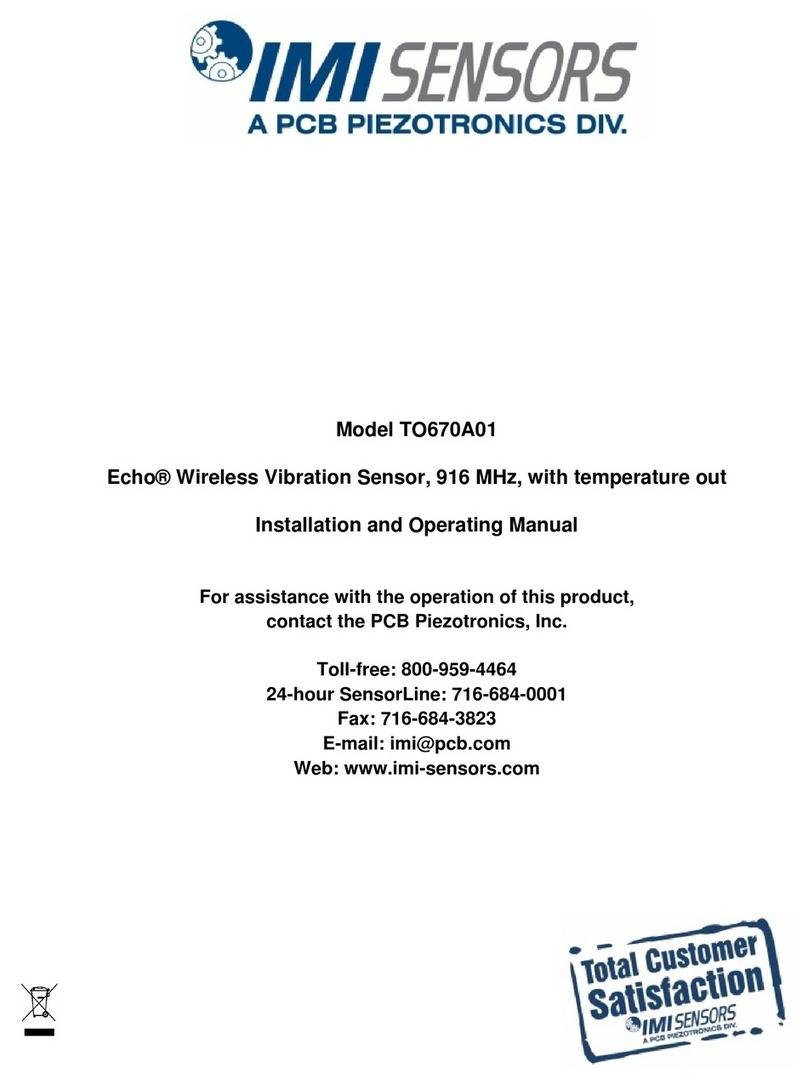
PCB Piezotronics
PCB Piezotronics IMI SENSORS Echo TO670A01 Installation and operating manual
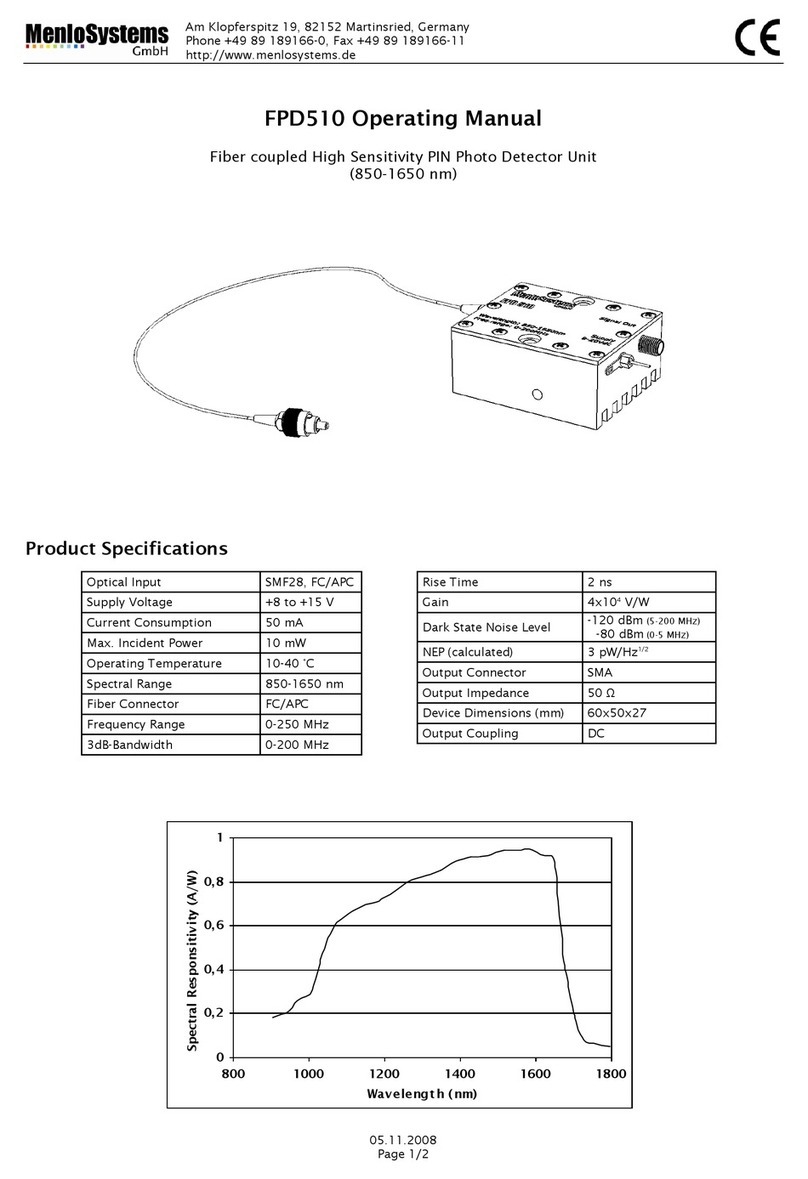
Menlo Systems
Menlo Systems FPD510 operating manual
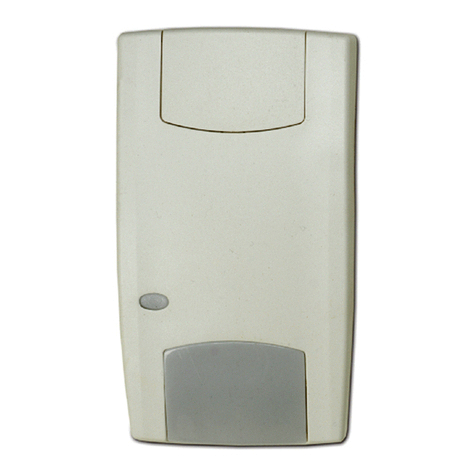
Interlogix
Interlogix EV1116 Series Installation sheet
